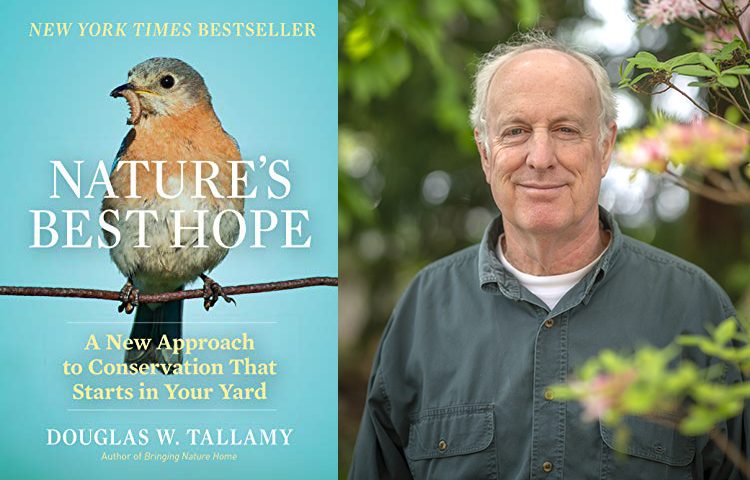
Every now and then you read a book which you believe should be read by everyone on the planet. Nature’s Best Hope by American entomologist and conservationist, Doug Tallamy, is such a book.
The reason why is that it preaches simple truths:
1. We are in the midst of an incredibly dangerous biodiversity crisis [coupled with climate change]
2. That every human on the planet ultimately depends on biodiversity and nature for stable weather and climate, food, water and fresh air; that is, life providing and supporting services.
3. Every person owes a debt to the planet for these life services. Every person has a responsibility to be part of the solution by doing something to protect and encourage the re-establishment of biodiversity.
4. Part of the answer is a simple solution; plant locally native plants in every backyard and re-establish an ecology. Locally native plants are the base part of the local ecology.
5. Insects and a host of other invertebrate life have evolved with these plant species, and thus depend on them.
6. Growing local plants and thus local insects encourages other organisms from higher in the food web, like birds, frogs and mammals to arrive and survive.
7. Exotic plants do not support insects in a comparable way to local native plants.
8. Lawn is an ecological desert, supporting very little life.
9. Replacing exotic trees with native trees in addition to replacing half of your lawn with locally native ground covers, wild flowers, and shrubs would bring nature home!
10. Tallamy estimates that if citizens of the USA could return half of their backyards to locally native plants then the Homegrown National Park created would be huge [some 20 million acres] and have many positive ecological and social benefits.
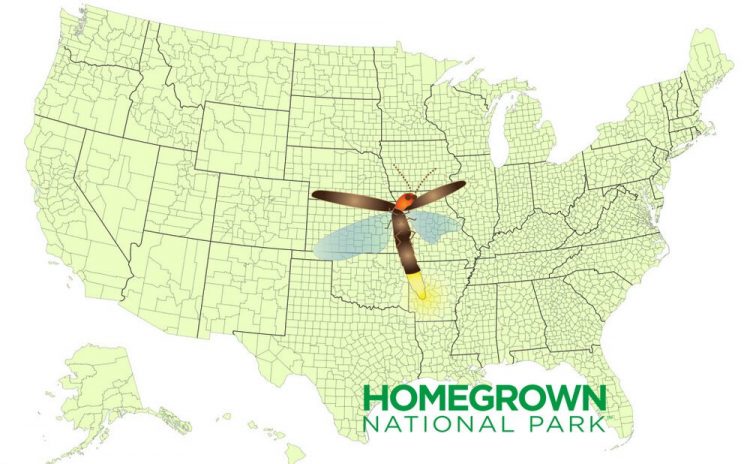
The book is simply yet persuasively written, filled with scientific and historical evidence to make his case. While reading the book I kept muttering, “Of course”; indeed, there was little to surprise or disagree with.
Tallamy presents data to demonstrate the stark difference between native trees and exotic trees in their ability to support insects. Native trees, unsurprisingly, had a far higher insect biodiversity and a far higher biomass of insect life. The latter figure very significant when you remember that many breeding passerines depend on the humble caterpillar to feed themselves and their offspring. Of interest to birders, Tallamy also presents data demonstrating that the breeding success of chickadees, for example, numbers of surviving chicks, correlates positively with the number of native trees in the immediate vicinity.
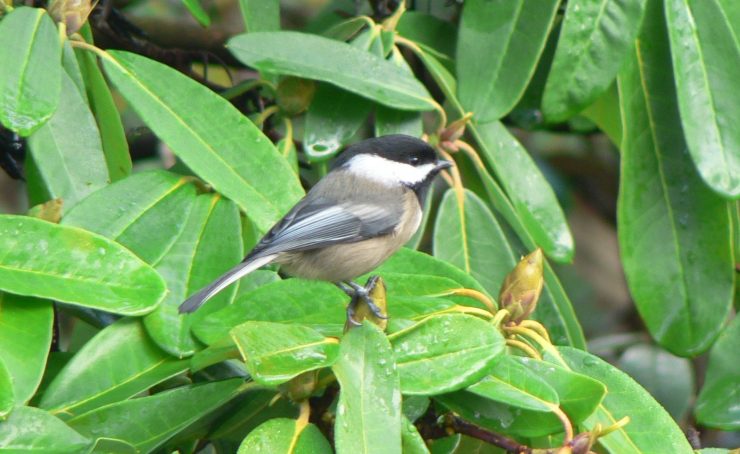 Black capped Chickadee
Black capped Chickadee
Tallamy encourages the planting of Oaks across North America as they are the greatest of trees in their ability to support biodiversity, as they provide the biggest caterpillar boost to a local ecology.
The book is written by an American for Americans using American examples but the message still rings loudly relevant to me down under. The central messages, numbered above, are as important to me as anyone.
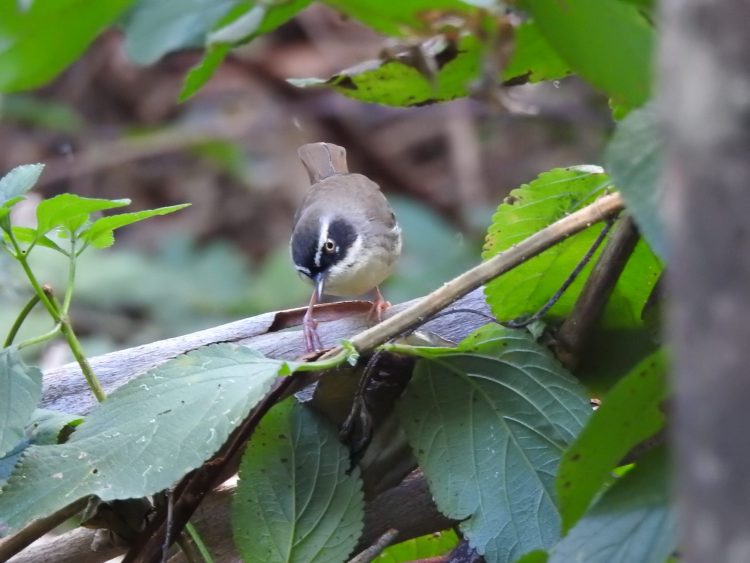 A White-browed Scrubwren; one of the insectivorous passserines in my yard that will benefit from more native plant species.
A White-browed Scrubwren; one of the insectivorous passserines in my yard that will benefit from more native plant species.
Since reading the book, and perhaps aided by the reality of no travel, I have been doing my best to live by the creed recommended by Nature’s Best Hope. I have been removing exotics and weeds and planting a range of new local trees. I have arranged for my local Council to come into my local school and plant some 150 locally native plants: trees, shrubs and vines. [And I plan to involve the students so they have a good understanding of the reasons why.] My yard is a work in progress but it is a labor that excites me and I especially look forward to a few years down the track when the variety of plants will look more impressive than they do currently.
The sad part of the story?
Since reading the book I have been noticing weed tree species far more consciously and far too frequently everywhere on my home area of the Sunshine Coast; Camphor Laurels, Chinese Elm, Umbrella Tree, African Tulip, Easter Cassia – to name a few. Before I knew they were there but now they cause me greater offence and distress. I have been noticing lawn grass in far too many places where it does not need to be.
The trick is to get to the mind set where these things are seen as possibilities rather than just problems. Try it yourself – drive around a suburb and everywhere there is lawn imagine it being replaced with native gardens of mixed species.
I’m planning on a variety of projects over the next few years to encourage more and more locally native plants planted by residents, Council and businesses. As well as steadily reducing my lawn!
Please read Doug’s book and / or listen to him on one of the many podcasts or via Youtube and then get to work turning your backyard into a minor haven for nature and wildlife! I appreciate that, given that this is basically a blog for birders, I am writing to the converted when I am trying to sell the incredible benefits of living near a wildlife friendly garden, so please try to encourage your friends, family and enemies to do so as well.
POST SCRIPT
Largely because of my reading of the book I recently arranged for my local Sunshine Coast Council to assist in a small revegetation project at Burnside High School where I teach. I arranged for my Grade 12 students to each put at least one locally native tree, shrub or vine into the school’s soil. Together we planted some 140 individual plants!
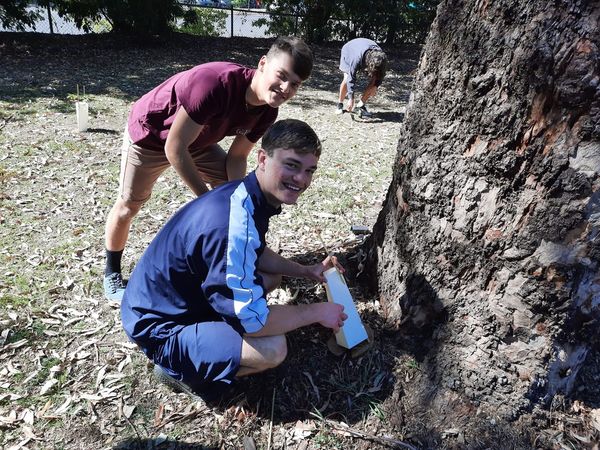











Hi Ken,
Thanks for this terrific review. This book sounds intriguing and I’ve ordered it. Anything we can do, however small, to save our planet is worth trying. Looking forward to reading “Nature’s Best Hope”.
Well done to you and your students with the revegetation project!
Cheers,
Lisa